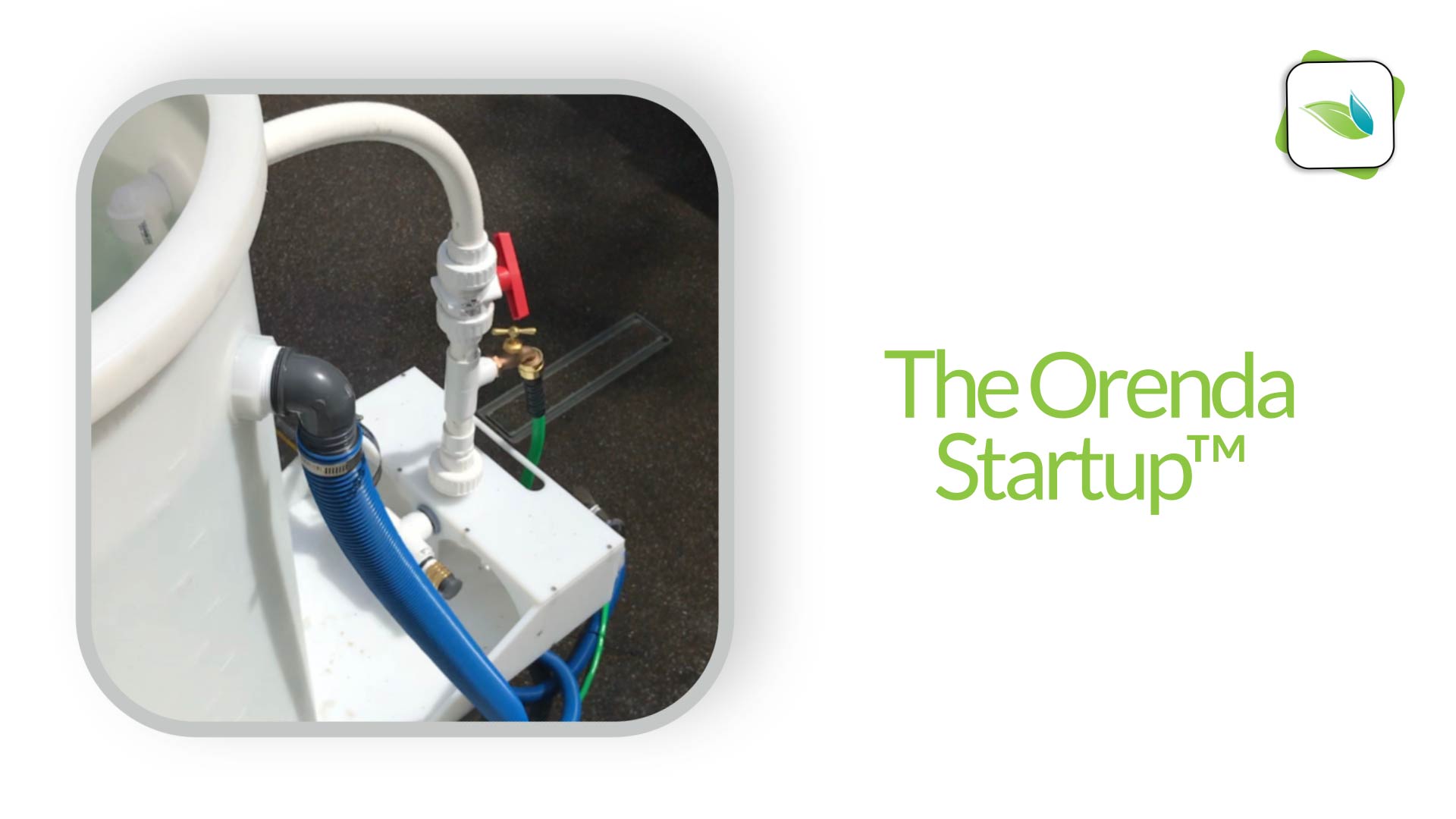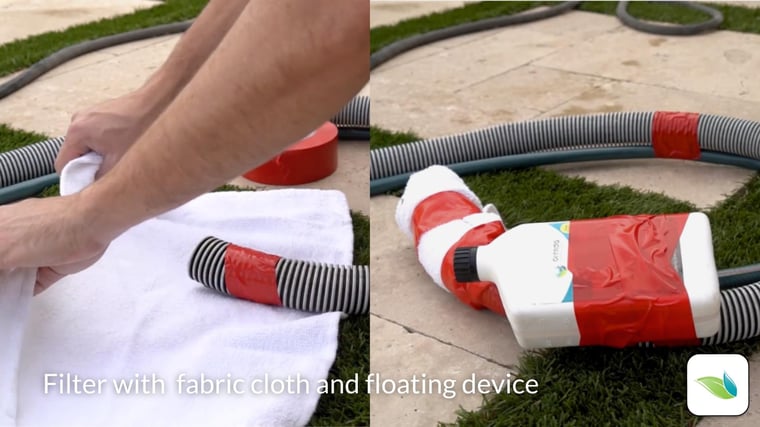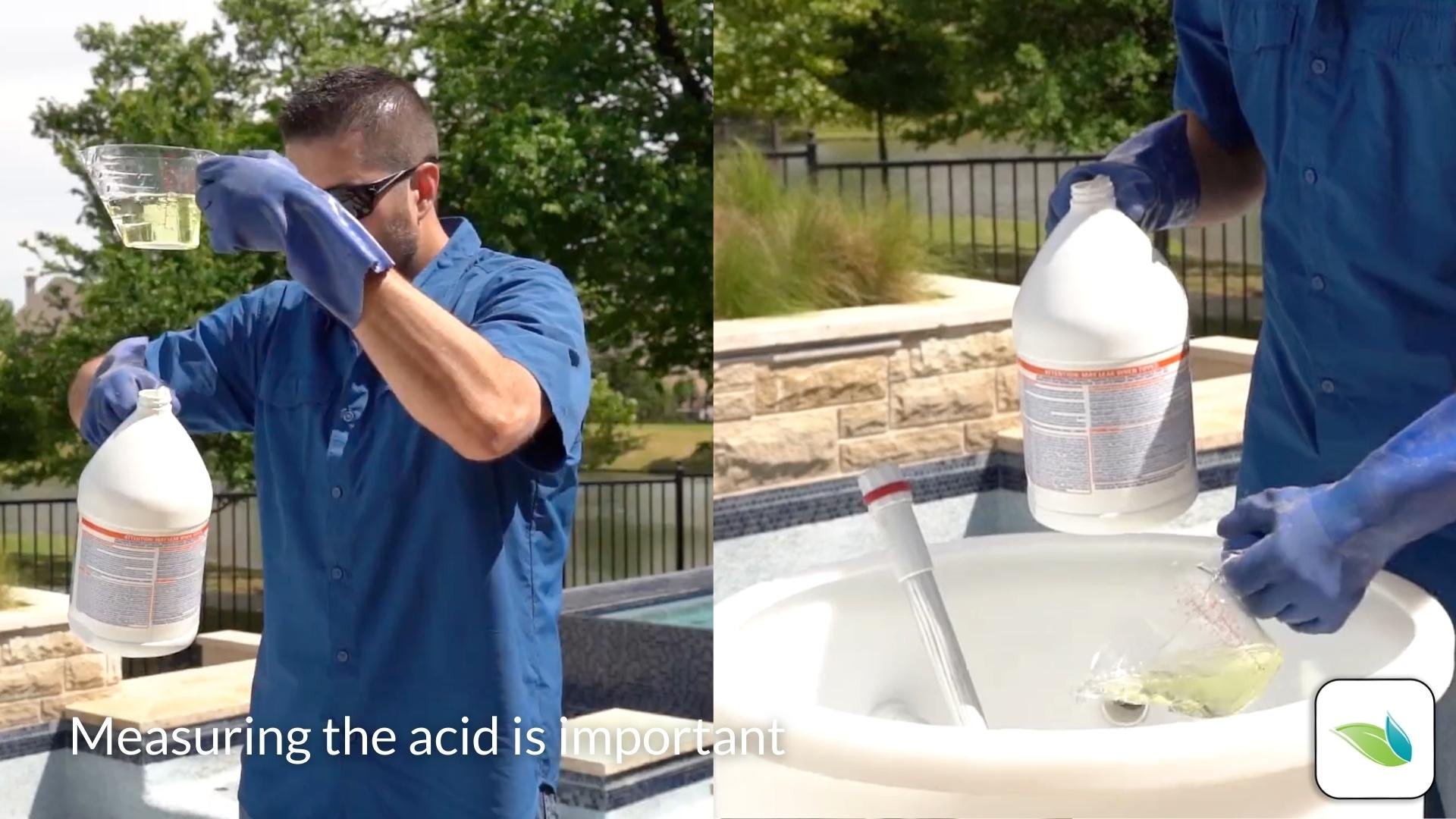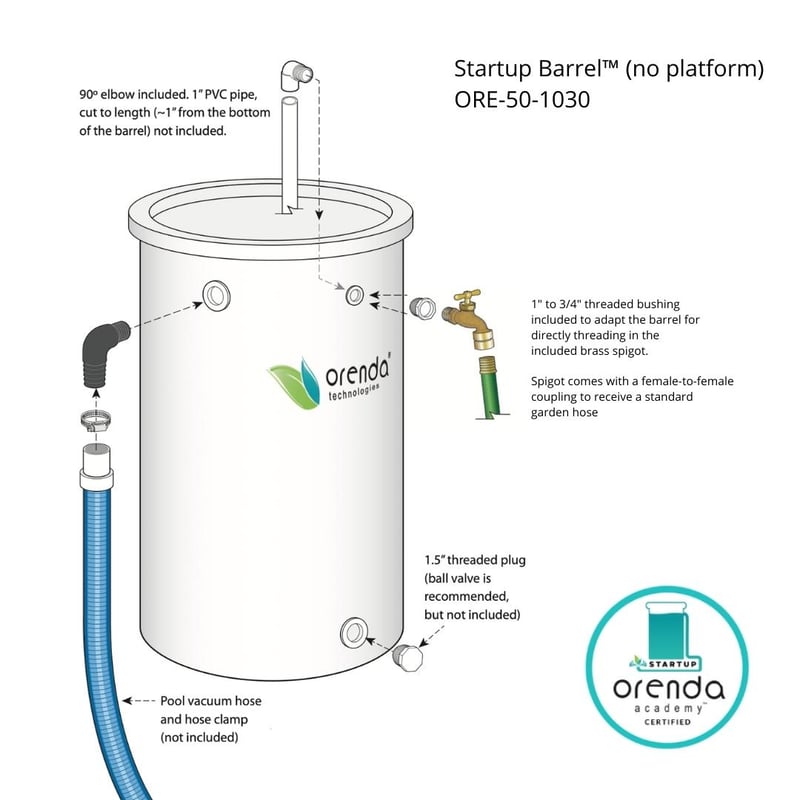The Orenda Startup® Step-by-Step Guide

The Orenda Startup® Procedure
Based on 10,000 gallons (37,855 L)
Note: We have discontinued the Platform (ORE-50-10301). We now only offer the 55 and 30-gallon Startup Barrels with fittings.
SAFETY NOTE: Pre-dissolve all dry chemicals in water prior to adding to the pool. Never throw dry chemicals directly into the pool, and never allow chemicals to sit directly on a pool surface.
Overview
This is the official Orenda Startup® procedure which will guide you through how to start up your swimming pool. Understand that this is just a guide and is subject to adaptation depending on your tap water's chemistry, shape and style of pool, and local climate. The LSI chemistry objective is the most important target to accomplish to protect the pool plaster from aggressive water. There are many ways to get to it. Click here for the procedure on how to set up the Orenda Startup Barrel™. As an aside, since SC-1000 is an alkaline product, we recommend neutralizing its high pH (by adding 12 fl.oz. of muriatic acid per 32 fl.oz. of SC-1000) to the startup barrel.
Related: How to Implement the Orenda Program
You will need:
- Test kit and water thermometer
- Liquid and Dry measuring cups
- Protective gear (glasses, rubber gloves)
- The Orenda App
- At least one clean bucket (several buckets if not using the Orenda Startup Barrel™)
- The Orenda Startup Barrel™ (if applicable)
- One clean garden hose
- One clean pool vacuum hose
- 2" screw clamp
- Plastic tarp
- Calcium Chloride
- Sodium Bicarbonate
- Muriatic Acid
- Orenda SC-1000 (32 fl.oz./10,000 gallons, rounded up to nearest 10,000 gallons)
- Orenda CV-600 (32 fl.oz./10,000 gallons)
- Stirring stick
Setup
- Bring equipment to the job site. If using the Orenda Startup Barrel™, place a plastic tarp down and assemble the barrel on the edge of the pool at the deep end.
- Hook up as many hoses as available that will fill the pool. Connect one hose to the influent spigot. Connect the hoses as demonstrated in our startup video at the bottom of this procedure page.
- Connect a clean vacuum hose to the 1.5" barbed fitting (barrel overflow) and secure with a 2" hose clamp (vacuum hose and clamp not included).
- Once hoses are connected, turn on one hose to fill the barrel to about 6" below the overflow hole (to the vacuum hose), and shut off the water.
- Test the tap water chemistry in the barrel if tap water has not yet been tested. Use the Orenda Calculator and adjust the parameters on the right side of the calculator to achieve the desired LSI target. The Orenda Calculator also gives you chemical dosing so you can achieve recommended levels for calcium and alkalinity within that required LSI target:
- LSI value of +0.20 to +0.30 (ideal), maximum of +0.49
- Target a minimum of 300 ppm calcium (unless tap water is over 70ºF, then a minimum of 260 ppm).
- The Orenda App will prescribe the amount of calcium chloride and muriatic acid necessary for the startup. If you need to increase alkalinity, it will prescribe sodium bicarb (note: never add sodium bicarb and calcium chloride together...you will regret it). Be sure you have enough of these chemicals on site before proceeding.
- Connect all fill hoses together, and tie them together with the vacuum hose that will have the pre-treated water. Wrap a fabric cloth around all hoses and tape securely. Finally, tape an empty bottle to these hoses as a float.

If you avoid this step, you can get unsightly marks on the bottom of the pool where the hose sits.

The cloth captures sediment and diffuses the waterflow, and the empty bottle floats so the hose does not stay on the bottom for long.
You are now set up and ready to add chemicals. Note: We recommend waiting a few hours after the plastering is completed to let it harden more before turning the water on.
Filling the Pool
- Pre-dissolve the prescribed amount of calcium chloride in the Orenda Startup Barrel™ or 5-gallon buckets. If using buckets, aim for no more than 15 pounds of calcium chloride per 5-gal bucket.
- Add half a quart (16 fl.oz.) to a full quart (32 fl.oz.) of SC-1000 to the barrel. If using buckets, split the dose evenly amongst buckets.
- Add 12 fl.oz. of 31.45% muriatic acid per quart (32 fl.oz.) of SC-1000 to neutralize its pH in the barrel or in between the buckets.
- If tap water pH is above 7.8, measure and add additional muriatic acid as prescribed by the Orenda App to get pH below 7.8. This acid is in addition to the 12 fl.oz./32 fl.oz. of SC-1000 prescribed in step above. If more than 64 fl.oz. of acid is required, divide the acid over a few hours during fill up.

- Stir the calcium solution until completely dissolved. The water should be clear to the bottom of the barrel and cooled down prior to proceeding.
- After the plaster has had a few hours to dry and harden, water can then be turned on to begin filling the pool.
- Turn on all hoses to fill the pool. The dedicated hose to the Orenda Startup Barrel™ should be a gentle, steady flow of water, which will overflow the calcium-rich water into the pool. Do not turn the hose on full blast through the barrel.
- Once the water begins flowing into the pool, pour the entire startup dose of SC-1000 (minus what you have just added to the barrel or buckets) into the pool. This can be added via a funnel down the vacuum hose of the barrel into the pool, or alternatively, you can add SC-1000 directly to the main drain if wearing the appropriate sponge footwear. The entire SC-1000 purge dose should be applied before there is 3" of water in the pool.
- Ensure all hose connections on the Orenda Startup Barrel™ are sealed and working properly before leaving.
Filling the Spa (if applicable)
- Fill the spa with water before filling the pool. Put a hose with a cloth taped on the end into the spa to begin filling.
- Add 8-12 fl.oz. of Orenda SC-1000 to the spa (and catch basins/troughs if the pool has a vanishing edge).
- Dissolve two (2) pounds of calcium chloride in a bucket with one tablespoon of SC-1000. Stir until clear and cooled down. Then pour into the spa as it is filling (the earlier, the better).
- Gently brush the spa to stir in the solution (without spilling the water over the spillway if there is one).
Day 1: Once the pool is full of water
- Fire up the equipment and begin circulation.
- Brush the entire pool and spa to get any residual dirt/debris off the surface. If the startup was done correctly, there should be no plaster dust, but there can still be dirt and debris from construction.
- Check water chemistry (after you brush vacuum). Input test results in the Orenda LSI Calculator App. Keep LSI between +0.20 to +0.49 .
- If the pH is high (8.0 or above), lower pH to just below 7.8 (about 7.6-7.8). Use the Orenda App to get the correct dosage needed, measure the acid with a measuring cup, and pre-dilute it in a bucket of water. Then pour the pre-diluted acid around the perimeter of the pool and brush. Never pour acid directly into the pool!
- Add the purge dose of CV-600 enzymes (32 fl.oz./10,000 gallons) into the skimmer or around the perimeter.
- Adjust alkalinity by adding sodium bicarbonate as needed. Adjust pH to about 7.6-7.8
- Do not add salt for 30 days. Do not add chlorine until day 3, and cyanuric acid (CYA) until day 5.
Days 2-4
- Check chemical levels. Maintain an LSI between +0.20 to +0.49 .
- Add non-stabilized chlorine on Day 3, no more than 3-5 ppm.
- Brush the pool and spa thoroughly before leaving.
Day 5
- Test water chemistry and adjust the LSI down to +0.00 to +0.30 using the Orenda LSI Calculator App.
- Brush the pool and brush vacuum (not a wheeled vacuum).
- Add up to 30 ppm of CYA. Instruct pool owner to keep CYA level below 50 ppm to avoid overstabilization.
- The pool should be ready for the homeowner to take over at this point.
Day 30
- Add salt as necessary.
- Install wheeled vacuum cleaner if applicable.
Videos
How to perform the Orenda Startup®:
Days 1-5 and beyond:
The Orenda Startup® is about LSI, not just calcium:
Additional information and Disclaimer
The Orenda Startup Barrel™ should only be operated by a pool industry professional. These are Orenda Technologies' recommendations but we are not liable for the use of calcium chloride and/or the build-out or purchase of fill tanks.
Calcium chloride in water gets extremely hot and can cause burns. Appropriate eye and skin protection should be worn while handling chemicals. Use at your own risk and liability.
More Questions?
866-763-4269


